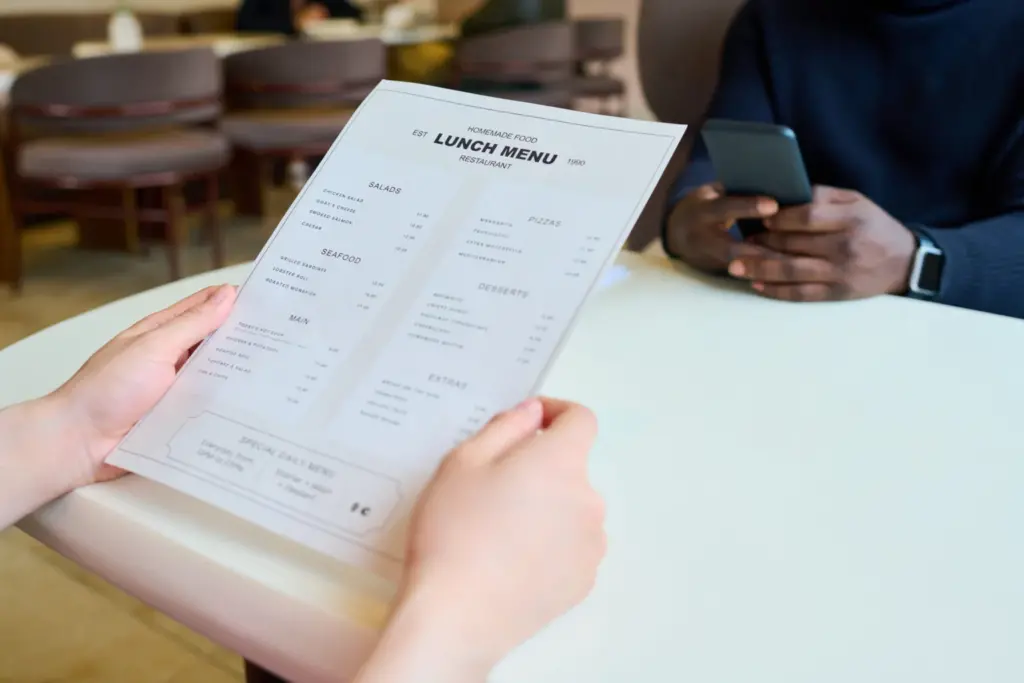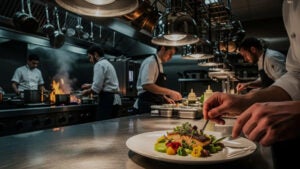Not so long ago, guests were handed menus that could double as makeshift doormats. These mammoth menus were bursting with food photos and detailed descriptions, turning the simple act of ordering into a marathon event.
The outcome? Slow table turnover, customers stuck in menu purgatory and servers and restaurant owners watching their profits dwindle. That’s why smaller, minimal menus have been on the scene for a couple of years and have proven to be a strategic approach to menu design.
“It’s so important to get the menu right,” said Billy Nichols, business solutions specialist for Gordon Food Service®. “It’s the piece of branding you get in front of 100% of your customers.”
According to the National Restaurant Association, menu streamlining has been a booming trend throughout 2023, and it looks like it’s here to stay. Minimalist menus embody the “less is more” philosophy, according to NRA. Tasting Table says simplicity is the key to creating unforgettable dining experiences. This approach becomes even more essential when you consider the impact of inflation on food prices and diners’ wallets.
Trim Down, Up Profit
Industry experts say that when it comes to menus, operators need to keep a few things in mind: Bigger is not better, and simple menus that reflect their brand and have fewer offerings are a more conducive, productive way to go. In other words, ditch the doormats and start designing those minimalist masterpieces.
Gareth Berg, Gordon Food Service business solutions specialist, says a more straightforward format seems to be catching on.
“Smaller, more precise menus are trending and something we recommend. There are a lot of positives, like less inventory to manage, higher turnover of inventory which equals better quality product and less waste, less training of staff to execute the menu and higher focus on menu items that remain,” he said.
Berg said smaller menus can flex their culinary muscles by running LTOs. It intrigues the customers and allows the operation to experiment with new items and recipes for future menus.
And it doesn’t hurt to shave off a few words.
Samantha Hawkes, Gordon Food Service business solutions specialist, said wordy menus on large landscapes will soon be a thing of the past. “It’s also good to minimize consumer fatigue by reducing overly wordy item descriptions,” she said.
One tool Hawkes says some operators should consider is a menu “kit” or interchangeable menus that they can work with all year long. “That option allows operators to pivot more quickly,” she said. “A successful menu ensures it accurately reflects the brand and tells the restaurant’s story.”
Berg also recommends that a menu look and feel like the restaurant itself. “Your menu describes who you are. Knowing your business is the key to success,” he says.
Showcase What You Know, Ditch What You Don’t
One piece of advice experts say works well is only putting items on the menu that customers order frequently and items the establishment does well.
Trying to appease everyone rarely works, Hawkes said. “Don’t showcase that item if you’re not strong in one space. You’re just setting yourself up for a bad consumer experience,” she warns.
Nichols couldn’t agree more. “You don’t have to check all the boxes. When you try and pander to everyone, you appeal to no one. You also don’t want to have all that food on hand. If it doesn’t sell, you’re out of profit. When too many items clutter a menu, it almost speaks poorly of the restaurant.”
Want to be sure you’re hitting the mark? Don’t be afraid to ask for feedback, according to experts. “There are some amazing tools out there for guest feedback in the technical sphere. Ask for feedback from your guests, determine large trends where feedback is negative, and address those negatives within the context of the brand,” Nichols recommends.
“You can fix issues with your delivery system or operational issues to improve service, but don’t put sushi on your steakhouse menu just because a few folks wanted sushi.”










